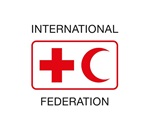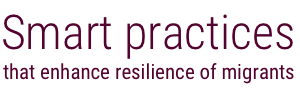Integration activities are started before the outcomes of asylum decisions are known.
The Finnish Red Cross starts the integration process for asylum seekers once they arrive at reception centres, before asylum decisions are known. On average, the asylum application process in Finland takes six months, during which asylum seekers stay in reception centres. Early integration activities are provided during this period. Asylum seekers are provided intensive Finnish classes to take them to basic proficiency. Additionally, events are held to familiarize people in the community and asylum seekers with each other. Events include football matches, community fishing and communal clearing of snow, among other activities. An activity that proved particularly successful was engaging asylum seekers to install winter tyres for people in the community for a small fee. This provided asylum seekers a meaningful activity and small income whilst relieving people in the community of a task many do not enjoy. Integration activities have improved perceptions of asylum seekers as people are given an opportunity to see asylum seekers in normal settings, and so can empathize better with them.
In Belgium, all reception centres are legally mandated to conduct activities that integrate the centres into the localities in which they are situated. Several activities and events are organized annually including sports events and sports gatherings. In 2014, there were 154 activities (122 activities outside the centre) across the 18 centres, affecting ~7,000 people.
Design. [P1] Focuses on the need of refugees to assimilate.
Implementation. [P6] Several partners work together on supporting early integration.
Smart practices
Smart practices report and database survey
About the report
People migrate in pursuit of a better life for themselves and their families. As described in the International Federation of Red Cross and Red Crescent Societies’ (IFRC) Policy on Migration, “migrants are persons who leave or flee their habitual residence to go to new places – usually abroad – to seek opportunities or safer and better prospects.
Read more
About the International Federation

